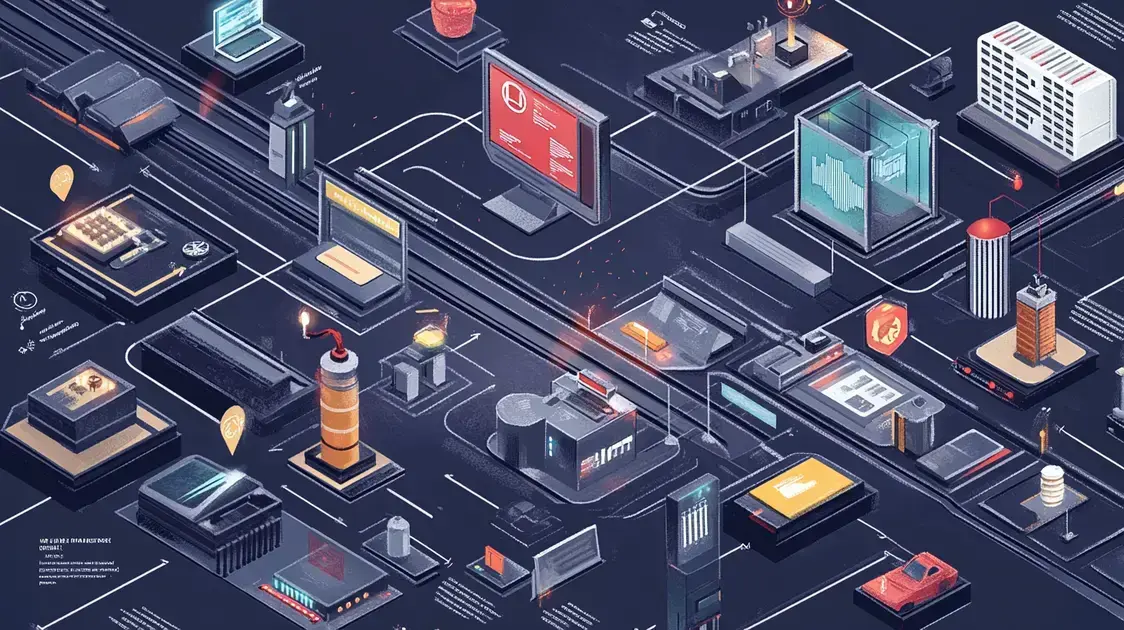Cybersecurity solutions are essential in safeguarding digital assets against evolving threats like malware, phishing, and data breaches. As cyberattacks grow more sophisticated, businesses and individuals must adopt proactive measures to protect sensitive information and maintain security.
Implementing strong security strategies, such as multi-factor authentication, encryption, and regular software updates, helps reduce vulnerabilities. Additionally, staying informed about emerging cyber threats ensures a proactive defense against potential risks in an increasingly connected world.
A solid cybersecurity approach goes beyond technology; educating employees and users on best practices is crucial. Understanding how cybersecurity solutions work can help you navigate the digital landscape safely. Keep reading to explore key strategies for securing your data effectively.
Understanding Cybersecurity Solutions
To effectively safeguard your digital life, it is crucial to understand cybersecurity solutions. These solutions encompass various strategies and tools designed to protect computers, networks, and data from attacks. With the rise of cybercrime, more people are recognising the importance of these solutions in everyday life.
What Are Cybersecurity Solutions?
Cybersecurity solutions refer to services and technologies that aim to secure your devices and information. These include antivirus software, firewalls, encryption, and security protocols. By implementing these measures, you can protect sensitive data from unauthorised access and other threats.
Why Are They Important?
In our increasingly digital world, cybersecurity solutions are vital for both individuals and businesses. They help prevent data breaches, identity theft, and loss of confidential information. Without these protections, your personal and financial information may be at significant risk.
Components of Cybersecurity Solutions
Effective cybersecurity solutions usually consist of several key components. These include:
- Network Security: Protects the integrity of your network, safeguarding it from intrusions.
- Application Security: Ensures that software and applications are secure from outside threats.
- Information Security: Protects data from theft or corruption, both in storage and transmission.
- Disaster Recovery: Refers to policies and procedures that help recover lost data in the event of an attack.
Understanding these components helps you appreciate the comprehensive nature of cybersecurity solutions.
Staying Updated
As cyber threats constantly evolve, it is essential to stay updated on the latest cybersecurity trends. Regular updates to your security software can help block new types of attacks. Being informed about emerging threats ensures you can adapt your strategies accordingly.
Types of Cybersecurity Solutions

Understanding the different types of cybersecurity solutions available is crucial for protecting your digital life. Each type serves a unique purpose and can be tailored to meet specific security needs.
Antivirus Software
Antivirus software scans your computer for malware and removes it. This is one of the first lines of defence against cyber threats. Regular updates ensure that the software can combat new threats as they emerge.
Firewalls
A firewall acts as a barrier between your computer and external networks. It monitors incoming and outgoing traffic and blocks unauthorised access. Both hardware and software firewalls are essential for comprehensive protection.
Encryption Tools
Encryption tools protect your data by converting it into a code. This means that even if data is intercepted, it cannot be read without the proper decryption key. Encryption is vital for protecting sensitive information, especially during online transactions.
Identity Theft Protection
Identity theft protection services monitor your personal information and alert you to any suspicious activity. These services help prevent misuse of your data, such as credit card information or social security numbers.
Intrusion Detection Systems (IDS)
An Intrusion Detection System monitors network traffic for suspicious activities. If it detects any anomalies, it can alert administrators to potential threats. IDS are crucial for early detection of cyberattacks.
Virtual Private Networks (VPNs)
A VPN creates a secure connection over the internet by encrypting your online activity. This makes it more difficult for hackers to access your data while you browse the web, especially on public Wi-Fi networks.
Multi-Factor Authentication (MFA)
Multi-factor authentication adds an extra layer of security by requiring more than one form of verification before granting access to accounts. This greatly reduces the risk of unauthorised access, even if a password is compromised.
Backup Solutions
Regularly backing up your data is vital. Backup solutions ensure that your information is stored securely and can be recovered if lost. This protects against data loss due to cyberattacks, human error, or hardware failures.
How to Choose the Right Cybersecurity Solution
Choosing the right cybersecurity solution is essential for ensuring the safety of your data and systems. Here are key steps to guide you through the selection process.
Assess Your Needs
The first step is to determine the specific needs of your organisation. Identify what data and systems require protection and understand the potential threats you face. This helps you focus on the solutions that address your unique vulnerabilities.
Evaluate Available Solutions
Research various types of cybersecurity solutions available in the market. Consider both software and hardware options. Make a list of solutions that align with your needs, such as antivirus software, firewalls, and encryption tools.
Check Compatibility
Before committing to a solution, check its compatibility with your existing systems. Ensure that the solution can integrate seamlessly without disrupting your current operations or creating vulnerabilities.
Look for Scalability
As your organisation grows, your cybersecurity needs may change. Choose a solution that is scalable, allowing you to add features or expand coverage as needed without incurring significant costs.
Consider User-Friendliness
The cybersecurity solution should be easy to use for your team. A complex system may lead to errors or insufficient usage. Look for solutions that offer user-friendly interfaces and good support.
Assess Vendor Reputation
Research vendors to select a reputable provider. Read reviews and examine case studies to understand their effectiveness. A trusted vendor is crucial for ensuring reliable support and regular updates.
Evaluate Cost and Budget
Consider your budget when choosing a cybersecurity solution. Compare the costs of different options but remember that the cheapest option may not provide adequate protection. Look for a balance between cost and functionality that suits your financial capacity.
Seek Expert Advice
If you are unsure about the best solution for your needs, seek advice from cybersecurity experts. They can provide insights and recommendations based on their experience. This guidance can be invaluable in making an informed decision.
Implementing Cybersecurity Solutions in Your Business
Implementing cybersecurity solutions in your business is crucial for safeguarding sensitive data. Here are steps to effectively implement these solutions.
Conduct a Security Assessment
Start by evaluating your current security posture. Identify existing vulnerabilities and threats to your data and systems. This will help you understand what solutions are necessary for your business.
Develop a Cybersecurity Plan
Once you know your risks, create a detailed cybersecurity plan. Outline the types of solutions you will implement, set goals, and establish timelines for deployment. A well-thought-out plan is essential for effective implementation.
Involve Relevant Staff
Engage your IT team and other key stakeholders in the implementation process. Their involvement ensures that the necessary measures are adopted effectively and that all team members understand their roles in maintaining cybersecurity.
Provide Training and Resources
Ensure that employees receive proper training on the new cybersecurity solutions. Educate them on best practices for data protection and the importance of following security protocols. Continuous training is vital as threats evolve.
Deploy Solutions Gradually
Rather than implementing all necessary solutions at once, consider a phased approach. Start with critical solutions like firewalls and antivirus software before moving on to more advanced tools like intrusion detection systems.
Monitor and Adjust
After implementation, continuously monitor the effectiveness of your cybersecurity solutions. Use metrics and reporting tools to assess their performance. Be ready to make adjustments as needed based on evolving threats.
Establish a Response Plan
Create a response plan for potential security incidents. This should outline the steps to take in case of a data breach or cyber attack. Being prepared can mitigate damage and reduce recovery time.
Regularly Review Policies
As technology and threats change, regularly review and update your cybersecurity policies. This ensures that your business remains compliant with regulations and stays ahead of potential vulnerabilities.
Comparing Cybersecurity Solutions Providers

When comparing cybersecurity solutions providers, it is essential to evaluate several key factors to ensure that you select the best fit for your organisation.
Reputation and Trustworthiness
Check the reputation of different providers. Look for reviews, testimonials, and case studies that highlight their effectiveness. A provider with a strong track record is more likely to deliver reliable solutions.
Range of Services
Not all providers offer the same services. Evaluate the range of cybersecurity solutions they provide, such as antivirus software, firewalls, and data encryption. Choose a provider that can meet your specific needs comprehensively.
Pricing Models
Compare the pricing structures of various providers. Some may offer subscription-based models, while others provide one-time purchase options. Make sure to assess the overall cost against the features and support included.
Customer Support
Effective customer support is crucial when dealing with cybersecurity threats. Evaluate how responsive and helpful their support team is. Check if they provide 24/7 assistance, resources, and training for your team.
Scalability
As your business grows, your cybersecurity needs may change. When comparing providers, consider their scalability. Choose a provider that can easily adapt to your evolving requirements without significant added costs.
Compliance and Regulatory Support
Ensure the provider understands regulations relevant to your industry. They should help you achieve compliance with laws regarding data protection, such as GDPR or HIPAA, along with providing necessary support for audits.
Technology and Innovation
Assess how up-to-date the provider’s technology is. Cybersecurity is a fast-changing field, so select providers that continually invest in research and development. This ensures they can protect against the latest threats.
Integration with Existing Systems
Finally, check how well their solutions integrate with your current systems. The better the integration, the smoother the implementation process will be, reducing potential downtime and security gaps.
Future Trends in Cybersecurity Solutions
The future trends in cybersecurity solutions are critical to understanding how to protect your digital life effectively. As cyber threats continue to evolve, so do the strategies to combat them.
Increased Reliance on Artificial Intelligence (AI)
AI is becoming an essential tool in cybersecurity. With its ability to analyse vast amounts of data, AI can identify patterns and detect anomalies faster than traditional methods. This allows for quicker responses to potential threats.
Zero Trust Security Models
The zero trust framework is gaining traction, where no one—inside or outside the network—is trusted by default. Continuous verification of users and devices strengthens security, reducing the chances of breaches.
Integration of Internet of Things (IoT) Security
As more devices connect to the internet, ensuring their security is crucial. Future cybersecurity solutions are expected to include integrated IoT security measures that protect data transmitted by these devices.
Greater Emphasis on Compliance
With increasing regulations surrounding data protection, businesses need to prioritise compliance with standards like GDPR and CCPA. Future solutions will likely include tools that simplify compliance processes and ensure adherence to legal requirements.
Advanced Threat Detection
Enhanced threat detection technologies, like behavioural analytics and machine learning, will become more prevalent. These technologies can identify threats by analysing typical user behaviour, flagging any deviations.
Cloud Security Improvements
As more businesses move to the cloud, ensuring their security is vital. Future cybersecurity solutions are expected to enhance cloud security measures, making it safer to store and handle sensitive information online.
Focus on Cybersecurity Awareness Training
As human error remains a significant factor in breaches, investing in cybersecurity awareness training is essential. Future trends indicate that more companies will implement continuous training programmes for employees to combat social engineering attacks.
Collaboration Among Companies
Companies are likely to join forces to strengthen their cybersecurity. Sharing information about threats and best practices will help create a more secure cyber environment for all businesses.
Enhancing Your Cybersecurity Posture
Understanding and implementing effective cybersecurity solutions is vital in today’s digital world. With a variety of threats, from malware to insider threats, the need for robust security measures cannot be overstated.
By exploring current solutions available, comparing providers, and staying informed on future trends, individuals and businesses can better protect their sensitive data. Continuous training and adoption of innovative technologies will further strengthen your cybersecurity posture.
As cyber threats will only become more sophisticated, being proactive and investing in comprehensive cybersecurity solutions is not just an option—it’s a necessity for success in the digital landscape.
Check out our article on Emerging Technologies to explore the latest innovations that are shaping the future of various industries.
